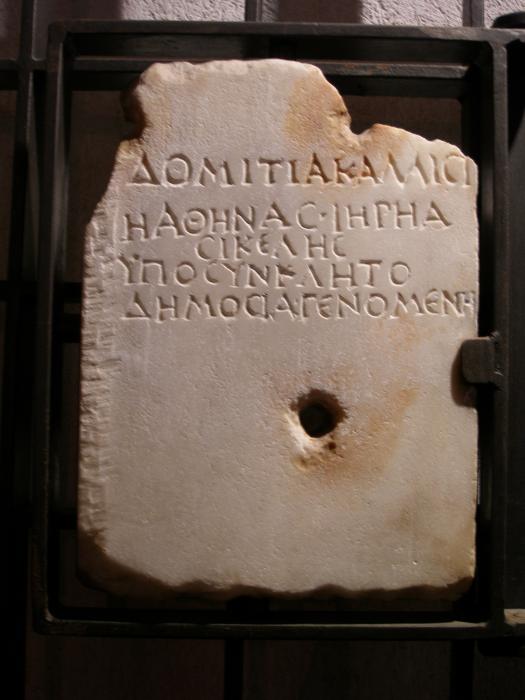NEWS
IDEA FINANCIAL SUPPORT FOR EARLY CAREER SCHOLARS
PARTICIPATING IN THE NEXT EPIGRAPHY.INFO EVENT
leggi
Dialogues sur la poésie épigraphique grecque et latine
Lyon 10-11.10.2025
leggiEPIDOC
Online drop-in sessions
leggiRESOCONTI
Bologna EpiDoc Workshop 2019
Bologna, 27-31 maggio 2019
Resoconto di Matteo Rivoli
leggiSAEG 5° Seminario Avanzato di Epigrafia Greca
Torino, 18-20 gennaio 2017
Resoconto di Francesca Giovagnorio
leggiEpiDoc Workshop Bologna 2016
Bologna, 12-14 settembre 2016
Resoconto di Irene Nicolino
leggiCall for papers - Society for Classical Studies 2019, San Diego
Graphic Display. Form and Meaning in Greek and Latin Writing
Graphic Display. Form and Meaning in Greek and Latin Writing
Annual Meeting of the Society for Classical Studies, San Diego, CA, January 3-6, 2019
Paula Perlman and Cristina Carusi (The University of Texas at Austin), organizers
A growing number of digitized photographs and squeezes of inscribed and painted Greek and Latin texts are available online, providing readers today easy access to significantly more information about the format of the texts and the layout of the texts on the objects that bear them than was possible prior to the digital revolution. At the same time, today’s presentation software (e.g. PowerPoint, Prezi, Haiku Deck) sensitizes producers and consumers of texts to the impact of text formatting (layout, letter size and font, color, etc.) on meaning and reader response.
Ancient writers of Greek and Latin texts that were inscribed and painted on stone and other materials appear to have employed strategies similarly, with the intent thereby (at least in part) of affecting (and effecting) the meaning of their texts and the response of their audience (reader and non-reader) to them. These strategies include:
- blank lines and spaces
- variation in the size and color of lettering
- paragraphing
- punctuation
- abbreviation
- column division
- text that is centered or justified at right or left
- direction of writing
- placement of multiple texts on one object (e.g. wall, stele, vase)
- combination of painting and inscribing in a single text
We believe that greater attention should be paid to these strategies, which we refer to collectively as “graphic display”, in the interpretation of Greek and Latin inscribed and painted texts on stone and other materials (excluding papyri). Within these parameters, we invite papers that investigate any aspect of the relationship of “graphic display”, content, and audience response. Among the questions that papers might address are the following:
- How and why are strategies of “graphic display” used to direct the audience’s attention to the inscription/object or specific parts of the text?
- How do strategies of “graphic display” relate to the space in which the inscription/object was set?
- What peculiar strategies of “graphic display” characterize different categories of inscriptions?
- What does the use of particular strategies of “graphic display” reveal about the audience’s interests and expectations?
- Can changes in “graphic display” be connected to significant developments in politics/religion/society, etc.?
- Do changes in “graphic display” contribute to our understanding of the audience’s literacy?
The panel invites abstracts for 20-minute papers. Abstracts should be submitted via email as an attachment to info@classicalstudies.org with the subject line “Graphic Display. Form and Meaning in Greek and Latin Writing” by February 8, 2018. For guidelines for abstracts, see https://classicalstudies.org/annual-meeting/guidelines-authors-abstracts. Please note, the text of the abstract should not mention the name of the author. The organizers will review all submissions anonymously and inform submitters of their decision by March 15, 2018.
